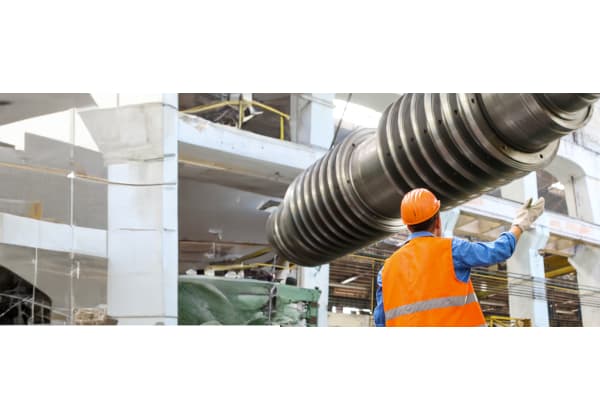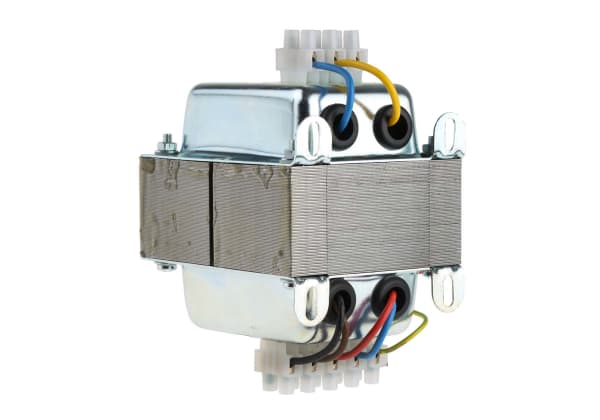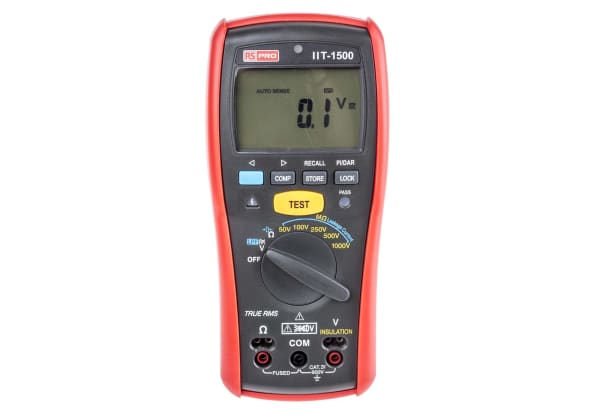- Published 21 May 2024
- Last Modified 21 May 2024
- 6 min
Guide to Circuit Protection
Fuses and circuit breakers are types of circuit protection. They feature in short circuit protection circuit designs and other types of circuits to prevent damage to machinery in the event of an overload of current. Not only that, they also safeguard personnel. This guide examines what circuit protection involves and looks at the types of circuit breaker used to protect industrial systems.

Reviewed by Jay Proctor, Technical Support Team Leader (April 2024)
Given that manufacturing typically relies on large amounts of electrical power, circuit protection – the intentional installation of a weak point in an electrical circuit, such as a fuse or circuit breaker – is an important part of ensuring electrical systems are safe and reliable. Circuit protection devices protect equipment, machinery, and production systems. They operate quickly to disconnect power if there is too much supply of current to a circuit, which can result in damage to equipment or a fire. This guide explains what circuit protection is and the factors to bear in mind when implementing it.
Circuit Protection
Circuit protection is vital to ensure systems in a manufacturing plant aren’t damaged in the event of an electrical event such as excessive current or temperature. Overcurrent – the supply of too much electric current to a circuit – generates heat and risks damaging equipment, or even causing a fire. Excessive current can be caused by short circuits, arc faults, ground faults, or poor design. Circuit protection devices are needed to counter these problems and ensure electrical safety.
Note: The difference between circuit protection and safe isolation is that safe isolation is the process of deliberately disconnecting a circuit and testing whether it is free of current.
Let’s break down the various elements of circuit protection and short circuit protection circuit design.
What is Circuit Protection?
One circuit protection definition is that it is the use of a protective device like a circuit breaker or fuse to automatically shut down a circuit in the event of an excessive or otherwise dangerous power load. Circuit protection via a circuit breaker stops current flowing to protect electrical equipment and reduce the risk of a fire or injury to personnel.
How does a circuit breaker work? While a fuse only operates once, a circuit breaker can be reset to guard against future problems. The circuit breaker will operate over and over again.
How Does Circuit Protection Work?
What does circuit protection do? Circuit protection introduces a device to the circuit that shuts the circuit down in the event of overcurrent (excessive current). That device automatically removes power in the event of a fault.
What is a circuit protection device? The fuse is just one very common form of circuit protection device and comes in a wide range of types. Fuses may be large or small and feature bayonet, tube, or screw designs.
Fuses are rated in lots of different ways and are a good choice among short-circuit protection methods. They are intended to remove the supply when there is a fault. This protects the application wiring or circuit as the weakest part of the circuit, preventing fire or damage to equipment. Fuses may be situated in a fuse box or a specially designed holder. Industrial applications involving large Voltages sometimes use large cartridge-type fuses. In any case, it’s important to select the correctly rated fuse for the circuit.
Circuit breakers also come in a variety of shapes and sizes. Low voltage circuits may be protected with small devices, while equipment like switchgear is used to protect high voltage circuits. One of the advantages of circuit breakers is that they do not need to be replaced, so operation can be restored quickly. Types of circuit breakers include cycling (Type 1) circuit breakers, non-cycling (Type 2) circuit breakers, and manual reset circuit breakers. With cycling circuit breakers, the device cycles on and off until the overload is removed. By contrast, with non-cycling types, the circuit breaker doesn’t reset until the overload is removed or the power is turned off. Manual reset circuit breakers are reset using a button that resets the device following an investigation by the technician.
Types of Industrial Circuit Protection
Types of circuit protection for industry include:
- Moulded case circuit breakers. A low-voltage design that protects a wide array of electrical equipment
- Residual current circuit breakers. These circuit breakers detect residual current and are used in residential and safety-critical industrial and commercial applications. These circuit breakers are sometimes also offered with additional overcurrent protection functionality
- Motor protection circuit breakers. Low voltage circuit breakers that are specifically designed to protect motors
- Vacuum circuit breakers. Medium voltage circuit breakers where the vacuum is used to extinguish an electrical arc
- Sulphur hexafluoride (SF6) circuit breakers. Medium voltage design using sulphur hexafluoride to quickly extinguish an arc
- Oil circuit breakers. Designed for high voltages, this type of circuit breaker employs vapourised mineral oil to create a bubble of hydrogen around an arc, thereby extinguishing it
Electrical Standards
There are wide-ranging electrical standards that apply in the UK, covering everything from domestic appliances to factory machinery. Manufacturers are required by law to ensure electrical equipment is correctly protected and maintained.
Choosing a Circuit Breaker
When selecting a circuit breaker, it’s important to consider its Voltage rating and whether its capacity is enough for the application. The breaker should also be able to handle the level of current it might experience in a situation where there is a fault without experiencing damage itself. It’s also important to think about the circuit breaker’s continuous current rating at ambient temperature.
Some circuit breakers are more suited than others to harsh industrial environments where there is corrosion, moisture, high temperatures, or mechanical stress. The circuit breaker you select must be appropriate to where it will be used.
Finally, don’t forget to also think about ESD circuit protection (protecting against electrostatic discharge) when you are protecting your electrical systems. ESD circuit protection techniques also help guard against damage to sensitive electronics and components. RS can help - learn more here.
How to Use a Circuit Breaker
A circuit breaker will typically feature a lever to turn it on and off that also demonstrates when the circuit breaker has tripped due to an overload. In the event of power being lost due to an overload, and if the circuit breaker can be manually reset, there will be a partially tripped breaker that is halfway between the ‘off’ and ‘on’ positions.
/IDEAS%20and%20ADVICES/Fuse%20vs%20Circuit%20Breaker/Circuit%20Breaker%20Breakdown.jpg)
How to Reset a Circuit Breaker
The technician should locate the circuit breaker panel and open the door covering up the panel. Once it has been determined which breaker has tripped, it can be switched back into the ‘on’ position.
Circuit Protection Benefits
Circuit protection benefits include preventing lasting damage to equipment and machinery in the event of an overload and protecting people and premises against fire and electric shock. As well as protecting equipment, circuit protection helps it run reliably and reduces costly downtime. It can also improve energy efficiency and increase the lifespan of machinery.
Circuit Protection and Safety
In an industrial facility, an electrical fire has the potential to be catastrophic. This is why electrical safety is paramount, and that includes circuit protection. Correctly installing and using fuses and circuit breakers keeps personnel safe and guards against the risk of fire. Engineers should take steps to ensure all circuit protection devices are correctly installed and functioning as they should be throughout a manufacturing facility.
Working with electrical equipment? Explore our ranges of voltage testers and electrical relays.


